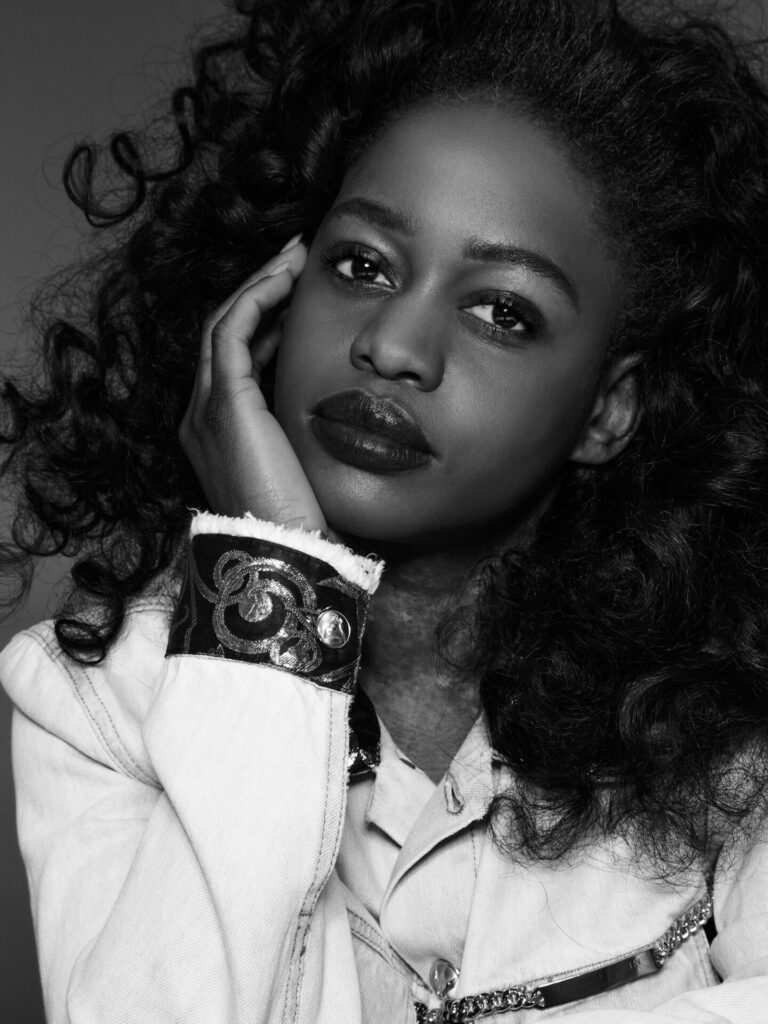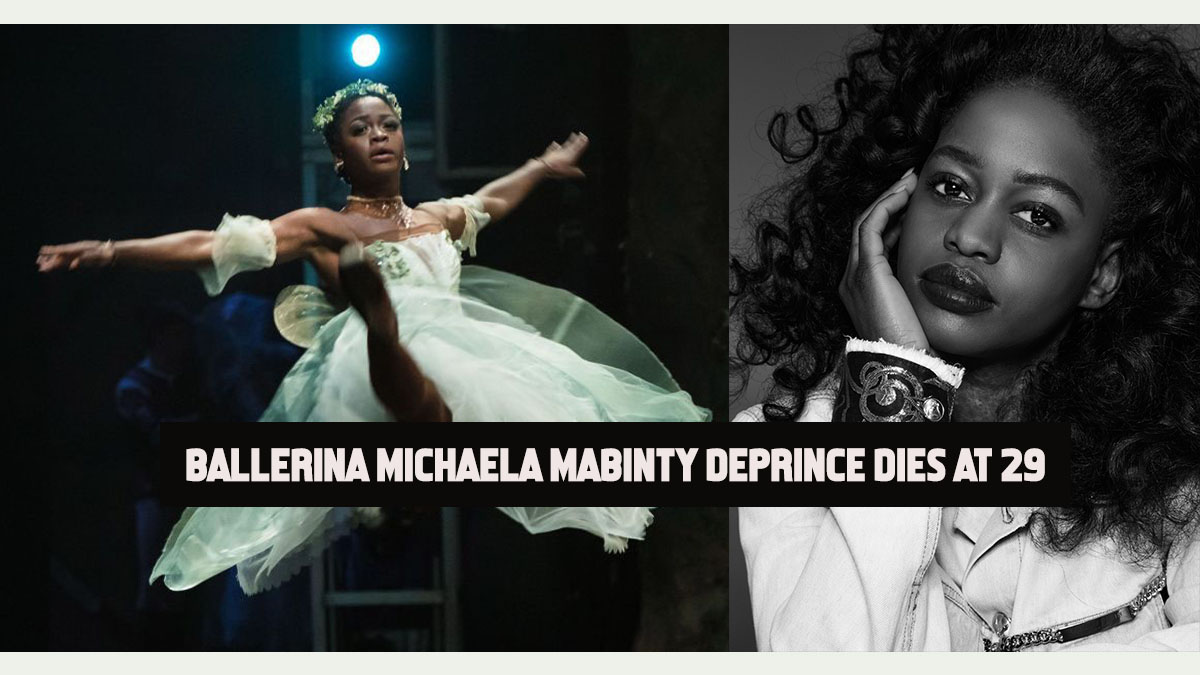Breaking News Ballerina Michaela Mabinty DePrince Dies at 29. The world of ballet has been struck with grief as news breaks of the untimely passing of Michaela Mabinty DePrince at just 29 years old. Michaela was not only a breathtaking ballerina, but also a symbol of resilience, strength, and beauty. Her incredible life journey from an orphan in Sierra Leone to an internationally recognized ballet dancer inspired millions across the globe. Her passing is a great loss to both the dance community and the world at large.
Early Life and Struggles
Born in War-Torn Sierra Leone
Michaela DePrince was born on January 6, 1995, in war-torn Sierra Leone during a time of brutal civil conflict. Known as Mabinty Bangura at birth, her early years were marked by immense hardship. Orphaned at the age of three, she faced unimaginable challenges, including the loss of both parents and a daily struggle for survival.
Journey to Adoption
Living in an orphanage where children were ranked by their perceived worth, Michaela was considered the least desirable due to her skin condition—vitiligo. She was called “the devil’s child” because of the white spots on her skin. Despite these cruel beginnings, Michaela’s life changed dramatically when she was adopted by an American family. Her new parents, Elaine and Charles DePrince, provided her with the love and support that would eventually propel her to stardom.
Overcoming Vitiligo and Social Stigma
Throughout her childhood, Michaela faced not only the trauma of her early life but also the societal stigma attached to her appearance. Her vitiligo—a condition that causes patches of skin to lose pigment—made her a target of bullying and exclusion. However, Michaela’s strength and determination allowed her to rise above these obstacles and pursue her dream of becoming a ballerina.

Michaela’s Journey into Ballet
Discovering Ballet at a Young Age
Michaela’s love for ballet began at a very young age. While still living in Sierra Leone, she found a magazine with a picture of a ballerina on the cover. This image sparked a passion that would shape her entire life. To young Michaela, the ballerina represented beauty, grace, and hope—a stark contrast to the violence and chaos she had known.
The Impact of Dance on Her Life
Dance became Michaela’s sanctuary. It was a way for her to express herself, heal from her past, and embrace her identity. Ballet, with its structured discipline and elegance, gave her a sense of control and purpose. Michaela’s natural talent, coupled with her dedication, allowed her to flourish as she took her first steps into the world of professional ballet.
Early Training and Education
Once in the United States, Michaela began formal training in ballet. She studied at prestigious institutions such as The Rock School for Dance Education in Philadelphia and the American Ballet Theatre’s Jacqueline Kennedy Onassis School. Her technical skill and emotional depth as a dancer quickly set her apart from her peers.
Rise to Fame
First Major Breakthrough
Michaela’s big break came when she was featured in the 2011 documentary First Position. The film showcased her journey as a young dancer, highlighting both her immense talent and the unique challenges she faced. This exposure catapulted Michaela into the international spotlight, and soon she was dancing on stages all around the world.
Performances Around the World
Michaela’s career took off as she began performing with world-renowned ballet companies. She danced for the Dutch National Ballet, among others, and quickly became known for her powerful performances, which blended technical perfection with raw emotion.
Recognition and Accolades
Throughout her career, Michaela received numerous accolades and was celebrated not only for her artistry but also for breaking barriers in the ballet world. She became a symbol of what was possible for young Black dancers in an industry that had long been dominated by rigid traditions and narrow beauty standards.
Michaela as an Inspiration
Advocating for Diversity in Ballet
Michaela was more than just a talented dancer; she was a fierce advocate for diversity in ballet. She often spoke about the lack of representation for dancers of color in classical ballet and worked to change this narrative. Her success opened doors for other aspiring dancers who had previously been marginalized.
Mentorship and Activism
Michaela was also a mentor to young dancers and used her platform to promote social justice. She was involved in various charitable organizations and worked to help children in need, both in the U.S. and abroad. Michaela’s activism was a key part of her legacy, and she was determined to use her fame for good.
Her Influence on the Next Generation
Through her dancing and her advocacy, Michaela inspired countless young people to pursue their dreams, no matter how big the obstacles in their path might be. She showed the world that beauty comes in many forms and that resilience and passion can overcome even the toughest challenges.
Tragic Death at 29
Details Surrounding Her Death
Michaela DePrince’s death at the age of 29 shocked her fans and the dance community. While the exact circumstances surrounding her death have not been widely publicized, the loss of such a vibrant, young talent has left a void in the ballet world.
Public Reactions and Tributes
Tributes poured in from around the world as news of Michaela’s passing spread. Fellow dancers, choreographers, and fans took to social media to express their sorrow and celebrate the incredible legacy she left behind. Many remembered her as not only a gifted ballerina but also as a kind and compassionate human being.
The Legacy She Leaves Behind
Michaela’s influence on ballet and the world at large cannot be overstated. She changed the way people viewed dancers of color, breaking down barriers and challenging stereotypes. Her passing leaves a tremendous loss, but her impact will be felt for generations to come.
Michaela’s Legacy in the Ballet World
Breaking Barriers for Black Ballerinas
Michaela’s rise to fame was more than a personal achievement—it was a victory for representation. Her career demonstrated that talent, not skin color, should determine one’s success in the ballet world. Her efforts paved the way for more dancers of color to be embraced by the industry.
Michaela’s Work in Non-Profit and Advocacy
Outside of her dance career, Michaela was deeply involved in humanitarian work. She used her platform to support causes she believed in, particularly those related to orphaned children and marginalized communities. Her commitment to these causes added another layer to her already remarkable legacy.
Lasting Impact on Dance and Representation
Michaela’s story is one of hope, resilience, and perseverance. Her legacy continues to inspire future generations of dancers and artists. Her contributions to the dance world have permanently changed the landscape, making it a more inclusive and diverse space.
Conclusion
Michaela DePrince’s life was one of incredible triumphs and heartbreaking loss. From her beginnings in Sierra Leone to her rise as a world-famous ballerina, she embodied strength and grace. Although her life was cut tragically short, her influence on the dance world and beyond will endure for many years to come. Michaela showed us all that it is possible to overcome even the greatest challenges and leave a lasting mark on the world.
What was Michaela DePrince’s early life like?
Michaela was born in war-torn Sierra Leone and lost both of her parents at a young age. She lived in an orphanage where she faced mistreatment due to her vitiligo, a condition that causes patches of skin to lose pigment. Despite these challenges, her life changed when she was adopted by an American family who supported her dream of becoming a ballerina
How did Michaela DePrince become famous?
Michaela gained international recognition through her role in the 2011 documentary First Position, which showcased her journey as a young ballet dancer. Her incredible talent, combined with her compelling life story, captured the world’s attention, leading to performances with major ballet companies like the Dutch National Ballet.
What was Michaela’s role in promoting diversity in ballet?
Michaela was a vocal advocate for diversity in the ballet world. She used her platform to challenge the lack of representation for dancers of color and worked to change the perception of what a ballerina should look like. Her career opened doors for other dancers of color and made the ballet world more inclusive.
